 |
| Some of us see
broken shells and washed up seaweed. Beachcombers see
shark teeth and sea beans. Others see leftover trash and
forgotten toys. Beachcombers see collections and
treasures. Many walk the beach for exercise and relaxation
and to find a souvenir shell. Beachcombers walk the beach
with an eye for the unique. They often find useful and
interesting items to add to artistic pieces and
collections. And even more often, beachcombers find
little-seen creatures that have washed in to shore. |
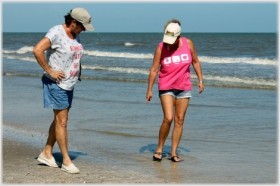
Walk the shore line to find the perfect shell or one of a
kind shark tooth. |
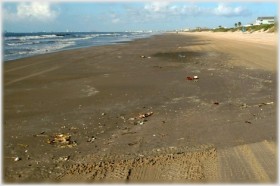
Also look for treasures along the wrack line, the line of
debris left by the receding high tide. |
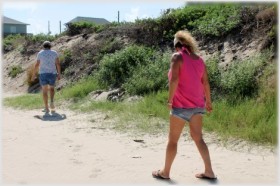
Many finds are along the dunes, deposited by the high
tides and beach cleaning equipment. |
| SHELLING |
Seashells can
be found in many sizes and shapes. Shells found on the
beach are the hard protective outer layer produced by
animals of the mollusk family. The animal is no longer in
the shell, and the empty seashells wash up on the beach.
There are two groups of mollusk: gastropods, having a
single spiral shape shell, and bivalves, which have two
symmetrical shells hinged together. These are generally
called clams. It is not common to find a bivalve shell
with the hinge intact. They frequently break apart before
washing ashore.
You often find a hermit crab living in a spiral shell, but
the crab is not the original animal producing the shell. A
hermit crab will find and inhabit an empty shell and call
it home. You may notice a small hole in the end of the
clam shell you found. The hole was caused by a predatory
snail using a tongue-like organ to 'drill' into the clam
shell and extract the meat.
The pictures below are examples of shells found on
Bolivar, although there are many other species. Some
shells are seasonal, so you will not see them year round.
Enjoy shelling. |
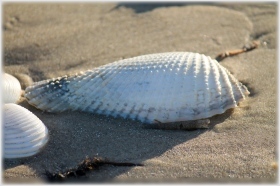
ANGELWING |
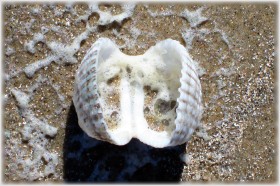
COCKEL |
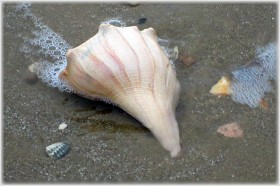
WHELK |
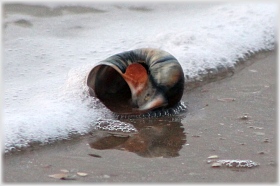
MOON SHELL (Shark's Eye) |
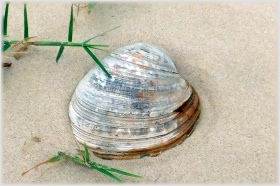
QUAHOG (Hard Clam) |
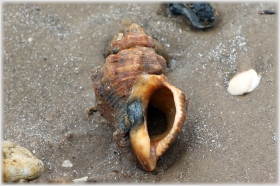
ROCKSHELL |
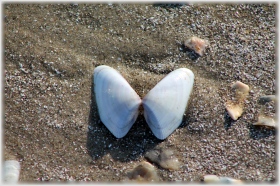
COQUINA |
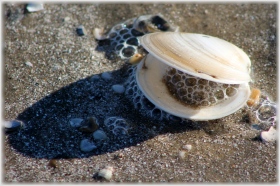
DOSINIA |

OYSTER |
| CRITTERS |
| Small sea
animals are occasionally found while beachcombing. Hermit
crabs are the most common but they typically do not wash
up onto the shore. You can find them by feeling around the
sand in shallow waters. Most spiral shells will have a
hermit crab living inside. Other animals are not so
common. The seahorse shown below was found floating in a
clump of sargassum weed, and the puffer fish was spotted
one evening at the water's edge. Walking the beach, you
may see several different species of jellyfish, some of
them are shown below. |
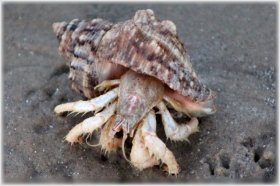
HERMIT CRAB |

SEAHORSE |
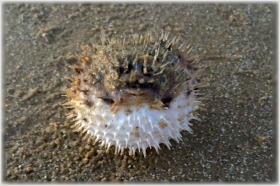
PUFFER FISH |
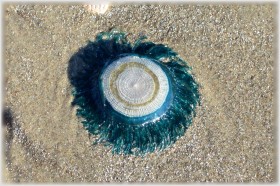
BLUE BUTTON JELLYFISH |
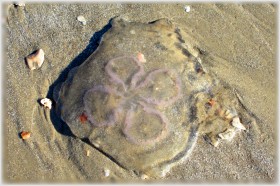
MOON JELLYFISH |
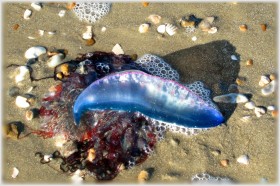
PORTUGUESE MAN-O-WAR |
| OTHER FINDS |
Some of these
are collectibles and others are just interesting to come
across. Sea beans, shark teeth, and sea glass are sought
after treasures by many beachcombers. Several varieties of
sea beans can be found, typically arriving in the gulf
from far away places carried by the winds and tides. Shark
teeth are fossilized remnants of pre-historic animals - it
takes a well trained eye to spot one. And sea glass can be
found in many shapes and colors: greens and blues are
highly prized specimen, along with odd shaped pieces.
Also shown below are other 'finds' you may encounter when
beachcombing on Bolivar. |
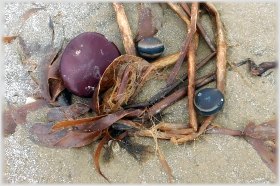
SEA BEAN |
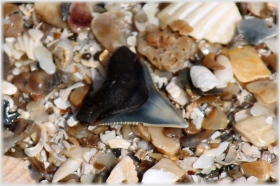
SHARK TOOTH |
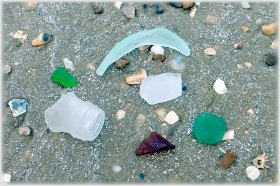
SEA GLASS |
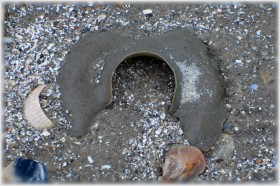
SAND COLLAR |
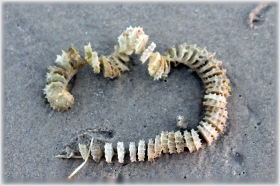
MERMAID'S NECKLACE |
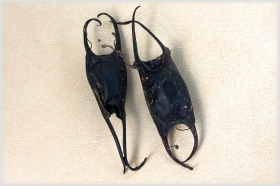
MERMAID'S PURSE |

CRUCIFIX FISH |
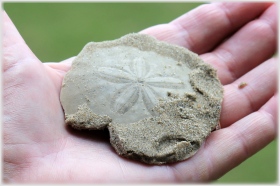
SAND DOLLAR |
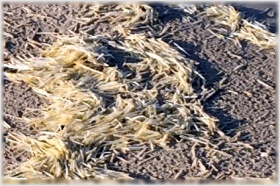
MANATEE GRASS |
| SEA FOAM |
| Sea foam is
made by air bubbles caused by the breaking waves. At
times, there are higher concentrations of organic
compounds in the water. These compounds serve as a binding
agent, and the bubbles stick together to form a thick
foam. The foam may pick up sediment, giving it a dirty
appearance. Sea foam is usually harmless and is often an
indication of a productive ocean ecosystem. |
 |
| Link to TEXAS
PARKS AND WILDLIFE Beach Findings |

